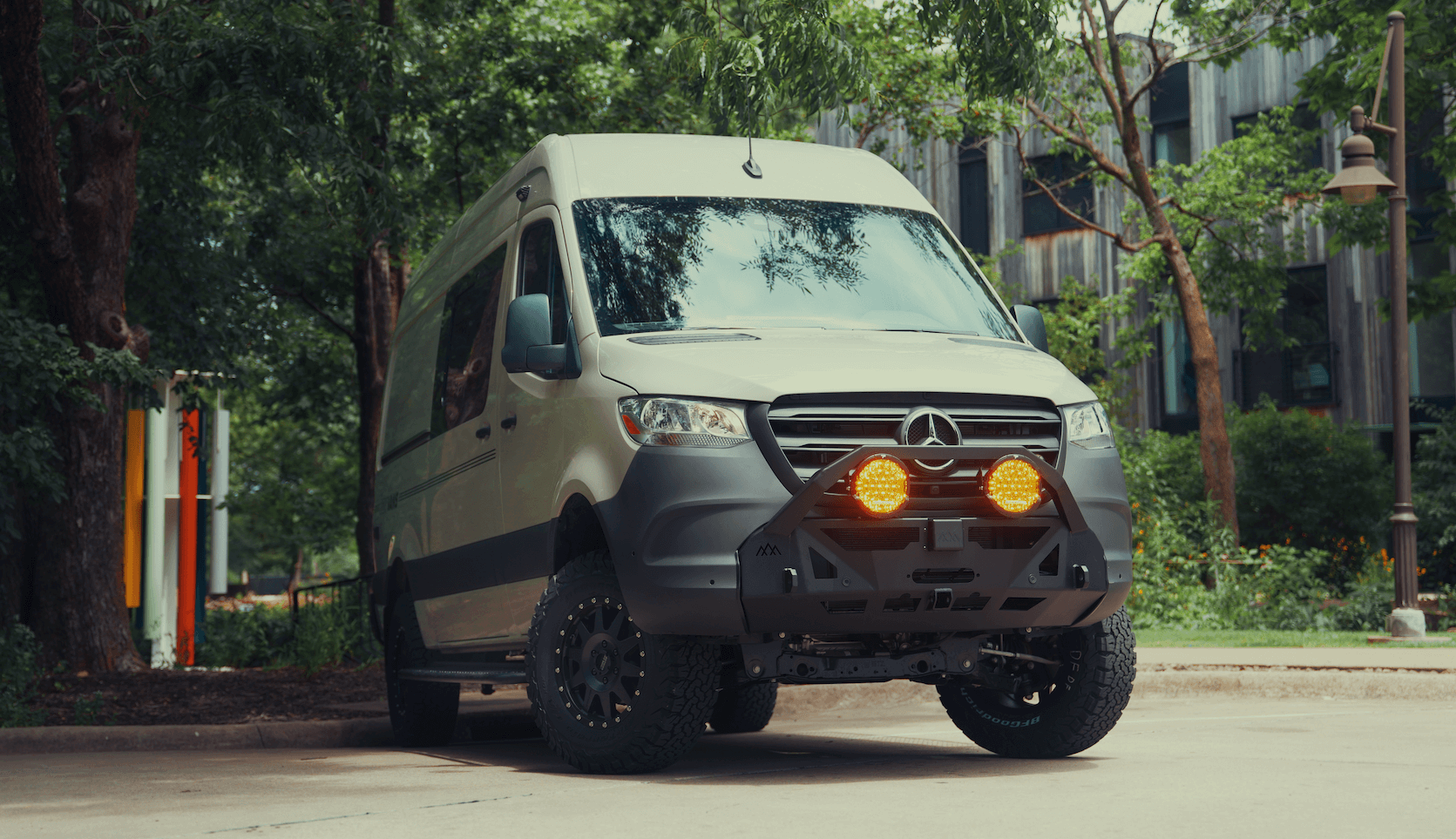Recreational Vans

Mud tires prioritize mechanical bite. Wide voids channel slop out of the contact patch, while staggered shoulder blocks claw for forward drive when the trail turns to peanut butter. The casing usually runs stiffer than all terrain options, which helps resist flex and punctures when a heavy van leans into rock edges or root shelves. On dry dirt and deep mud, that recipe works wonders. In shallow puddles and wet pavement, those same voids reduce rubber to road contact, so stopping distances can grow and steering feel can soften.
Self cleaning is the magic trick. As the tire rotates, mud releases from the big voids which exposes fresh biting edges for the next half turn. The flip side is fewer sipes and less fine edge density, which hurts wet braking and cold grip. If rain and slick city streets are a daily reality, consider an aggressive all terrain for a more balanced footprint, or look for a mud tire with generous siping and a compound tuned for wet weather.
Start with the scale. A built van often weighs far more than a typical SUV, so load index is non negotiable. Choose a load rating that exceeds your van’s actual corner weights with margin for water, fuel, passengers, and gear. Bigger diameter adds ground clearance and breakover help, but it can change effective gearing, soften acceleration, and push transmission shift points. Larger sizes also add mass, which strains brakes and wheel bearings if you overshoot what the chassis was designed to carry.
Fitment is not just about fender gaps. Wheel width, offset, and backspacing determine whether lugs or sidewalls rub at full lock or under compression. Too much positive offset can pinch clearance on control arms and sway bar links, while too little can push the tire outward and invite fender contact. Aim for a wheel width that matches the tire’s recommended range, and test for clearance through the full suspension arc. A careful trim or a small lift may be required to avoid rubbing once the van is loaded for travel.
Mud tires are honest about their compromises. Expect more hum on the highway, extra rolling resistance, and a firmer ride from a reinforced casing. Rotations matter more here than with street tires because the staggered blocks can feather and cup on heavy vans if neglected. Keep pressures matched to load, not a door sticker written for a different size. A quality alignment with proper caster helps straight line tracking and reduces edge wear.
Blocky lugs sing as they pass over pavement, and the lower the tread pitch variation, the more you hear it. You can tame the soundtrack with correct pressures and a rotation schedule every five to seven thousand miles. Balancing with road force measurement helps smooth the ride by pairing stiffer tire spots to wheel low points. Fresh shocks and bushings also quiet chatter that otherwise gets amplified by heavy tread.
H3
Sidewalls do the heavy lifting on rocky two tracks. A reinforced three ply design resists pinch cuts when a loaded van edges against shale or broken concrete. Look for scuff guards and rim protectors if curb contact is common in town. For winter travel, check for the three peak mountain snowflake mark. Some mud tires carry it, though many do not. In snow and ice, narrow sizing, added siping, and a softer compound improve control more than sheer tread depth.
Pressure tuning seals the deal. Use a quality gauge and adjust when the tires are cold. A chalk line across the tread can reveal whether the center or shoulders are doing too much work. For trail work, air down within safe limits for your wheel and load to expand the contact patch and smooth corrugations. Air back up before highway speeds to prevent heat buildup.
Closing the loop, choosing mud tires for a van is a balancing act between clearance, carrying capacity, and the way you actually travel. If your weekends include clay roads, forest spurs, and campsite departures after a storm, an MT pattern pays dividends. If most miles are paved with occasional gravel, a tougher all terrain often delivers better grip in the rain and a quieter commute.
OZK Customs can turn this theory into a setup that behaves. We measure real weights, verify wheel offset, correct caster, and confirm clearance at full lock so you do not chase rub marks and scalloped lugs. When your build is ready to evolve beyond stock tire specs, our team aligns tire choice with suspension, power needs, and the cargo you plan to carry.
Ready to map your van’s tire plan. Explore our van options and see how traction fits into a complete build path:
We build and upfit complete adventure vans and overland rigs, install wheels and tires, and tune suspensions so every component works together. Share your goals and terrain. We will recommend the right tire, the right fitment, and the right alignment to keep your van sure footed on trail and calm on the highway.
Want mud tire grip without the guesswork. Let OZK Customs size, fit, and dial your van for real world use. We handle tire selection, wheels, suspension tuning, and alignments so you get traction off road and manners on pavement. Share a few details and we will spec the right setup.
ADDRESS:
6159 E Huntsville Rd, Fayetteville, AR 72701
PHONE:
(479) 326-9200
EMAIL:
info@ozkvans.com